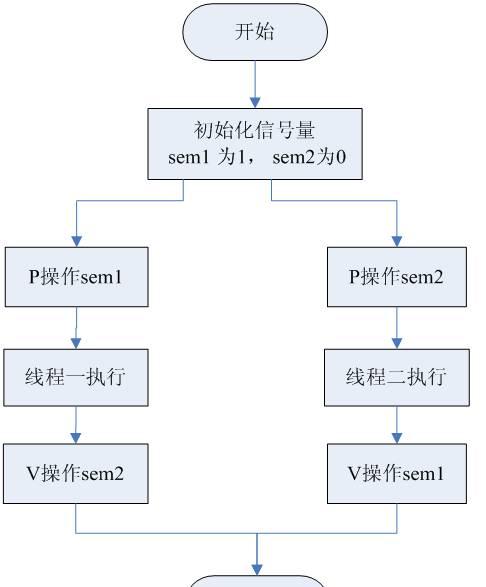
Linux线程同步方法大揭秘!
时间:2023-05-18 来源:网络 人气:
在多线程编程中,线程同步是一个重要的概念。线程同步指的是多个线程按照一定的顺序来访问共享资源,以避免数据竞争和不一致性问题。本文将介绍Linux下实现线程同步的三种方法。
互斥锁
互斥锁是最常用、最基本的线程同步机制之一。它通过在访问共享资源前对资源进行锁定线程同步的方法有哪些?Linux下实现线程同步的三[荐],从而保证了同一时间只有一个线程可以访问该资源。当一个线程想要访问被另一个线程占用的被保护资源时,它会阻塞等待互斥锁被释放。
linux下实现resumethread_线程池的实现_线程同步的方法有哪些?Linux下实现线程同步的三[荐]
以下是使用互斥锁实现线程同步的代码示例:
#include
pthread_mutex_tmutex;
void*thread_function(void*arg)
{
pthread_mutex_lock(&mutex);//加锁
//访问被保护的共享资源
pthread_mutex_unlock(&mutex);//解锁
}
intmain()
{
pthread_tthread_id;
pthread_mutex_init(&mutex,NULL);
pthread_create(&thread_id,NULL,thread_function,NULL);
pthread_join(thread_id,NULL);
pthread_mutex_destroy(&mutex);
}
linux下实现resumethread_线程池的实现_线程同步的方法有哪些?Linux下实现线程同步的三[荐]
条件变量
条件变量是另一种常用的线程同步机制。它允许线程在满足特定条件之前等待,从而避免了忙等待和资源浪费。
linux下实现resumethread_线程同步的方法有哪些?Linux下实现线程同步的三[荐]_线程池的实现
以下是使用条件变量实现线程同步的代码示例:
#include
pthread_mutex_tmutex;
pthread_cond_tcond;
void*thread_function(void*arg)
{
pthread_mutex_lock(&mutex);
while(condition_is_not_met){
pthread_cond_wait(&cond,&mutex);//等待条件满足
}
//访问被保护的共享资源
pthread_mutex_unlock(&mutex);
}
intmain()
{
pthread_tthread_id;
pthread_mutex_init(&mutex,NULL);
pthread_cond_init(&cond,NULL);
pthread_create(&thread_id,NULL,thread_function,NULL);
//唤醒等待条件的线程
pthread_cond_signal(&cond);
pthread_join(thread_id,NULL);
pthread_mutex_destroy(&mutex);
pthread_cond_destroy(&cond);
}
linux下实现resumethread_线程池的实现_线程同步的方法有哪些?Linux下实现线程同步的三[荐]
信号量
信号量也是一种常用的线程同步机制。它通过控制资源的访问数量来实现线程同步。当一个线程想要访问受信号量保护的共享资源时,它必须先获取信号量,然后才能访问该资源。当一个线程释放信号量时,其他等待该信号量的线程可以获取该信号量并继续执行。
线程同步的方法有哪些?Linux下实现线程同步的三[荐]_线程池的实现_linux下实现resumethread
以下是使用信号量实现线程同步的代码示例:
#include
#include
sem_tsem;
void*thread_function(void*arg)
{
sem_wait(&sem);//获取信号量
//访问被保护的共享资源
sem_post(&sem);//释放信号量
}
intmain()
{
pthread_tthread_id;
sem_init(&sem,0,1);
pthread_create(&thread_id,NULL,thread_function,NULL);
pthread_join(thread_id,NULL);
sem_destroy(&sem);
}
以上是Linux下实现线程同步的三种方法线程同步的方法有哪些?Linux下实现线程同步的三[荐],它们各有优缺点,可以根据具体情况选择适合的方法。在多线程编程中,线程同步是一个必须要掌握的技能,希望本文能对读者有所帮助。

MetaMask官方钱包官网版:https://fjjyyw.org/app/5665.html
5G专题
5G专题排行
- 1 光有姓名怎么查身份证号-如何查询他人身份证号?三种简单有效的方法,不容错过
- 2 游戏虚拟身份证号码2023-2023虚拟身份证号码推出:游戏玩家的新便利和社区加强
- 3 有身份证号怎么查询手机号-如何通过身份证号查询他人手机号?多种途径帮您快速解决问题
- 4 2023免费已成年身份证号-2023年起,成年人可免费领取身份证号,办事更便捷
- 5 激活神器kmspico win10激活工具-KMSpicoWin10激活工具:探秘稳定高效的神器,解
- 6 知道电话和名字怎么查身份证信息-如何查询身份证信息:通过电话号码或姓名,快速获取个人身份信息
- 7 怎么通过身份证号查询名字-如何通过身份证号查询姓名?详解两种查询方法
- 8 怎么输身份证号查姓名信息-如何安全可靠地查询身份证号对应的姓名信息?了解这些方法保护个人隐私
- 9 通过姓名电话怎么查身份证号码-如何查找某人的身份证号码?三种方法告诉你
- 10 怎么查身份证号码和真实姓名-如何查询他人的身份证号码和真实姓名?几种简单有效的方法分享

系统教程
-
标签arclist报错:指定属性 typeid 的栏目ID不存在。












